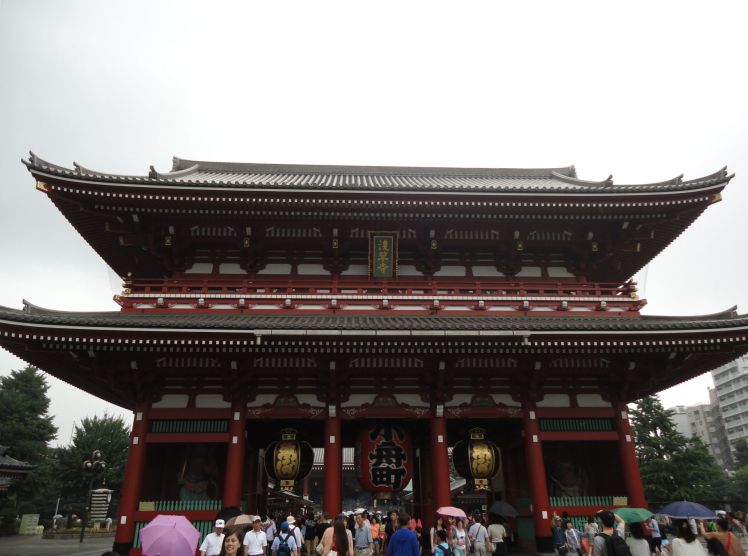
Tokyo is one of the great world cities that everybody has heard about. But to be honest, I liked Osaka better. Perhaps it’s because Tokyo is so big and multifaceted, so modern and such a mega-metropolis, that I wasn’t able to feel that much affection for it. I only spent three days there and maybe that wasn’t enough. It was the last stop of my Japan trip in 2013, with a trip to Mt Fuji bracketed in between, following Matsumoto.
I stayed in a rather old and cramped but passable hotel in a neighborhood between Ueno and Asakusa, two districts with a lot of history. Asakusa features Tokyo’s oldest and most well-known temple, Sensoji Temple, with over 1,300 years of history. It’s a pleasant white-and-red Buddhist temple, that has a front gate, the Kaminarimon or Thunder Gate, with a giant paper lantern hung in between and a small shopping street, Nakamise-dori, leading up to it, with stores selling snacks and souvenirs. Passing that street brings you to another gate, a large two-story one, with three giant paper lanterns, that you pass through before entering the temple proper. The main temple hall also features a giant paper lantern. The temple grounds is a nice place to walk around, with a pagoda, smaller halls, a 300-year-old bell and two rather stylish sitting Buddhas. The temple was busy with worshippers and tourists when I went there on a drizzling afternoon, and the shopping street was packed.
Weirdly enough, there is also a street near Sensoji that is well-known for … kitchen utensils. I passed by it and I saw a few stores, some of which had very large colorful kitchen cups as decorations, but passed up the chance to browse.
Asakusa has Tokyo’s oldest temple and its tallest tower. Tokyo Skytree is further east of Sensoji on the bank of the Sumida river. Standing 634 meters tall, the Skytree is the second-tallest structure in the world after the Burj Khalifa in Dubai. However, I didn’t bother to go up the Skytree, mainly because I planned to go up a skyscraper in downtown Tokyo that was free. I did walk up to it and appreciate how tall it was. It doesn’t have a fancy design as it is a fully functioning TV tower and only a small part of it is used for regular human activity, which is the observation deck.
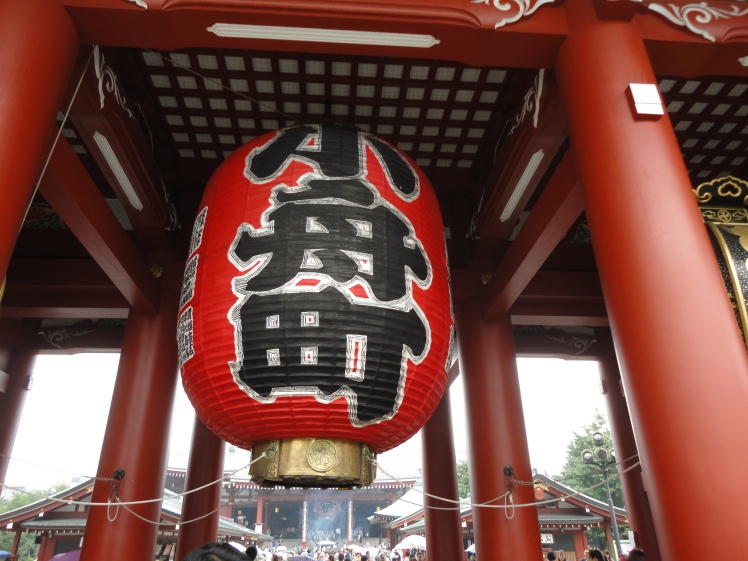
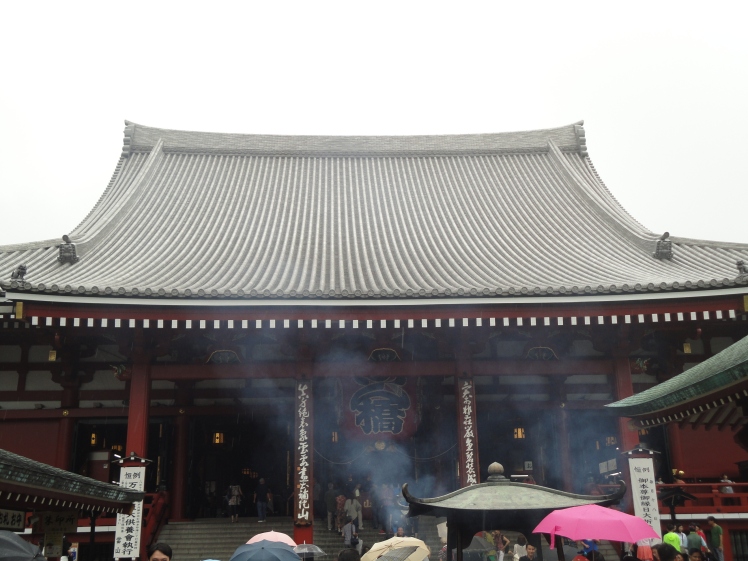
Main temple hall
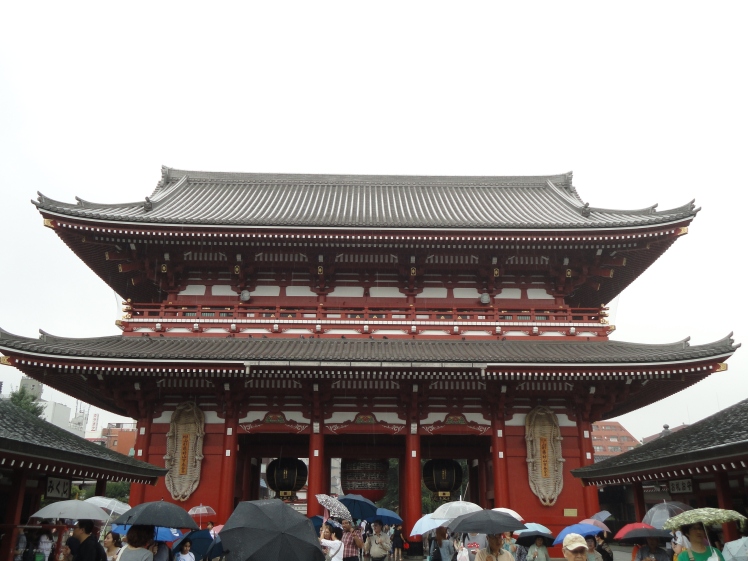
Looking back at the second entrance gate to Sensoji

Shopping street that leads up to the temple
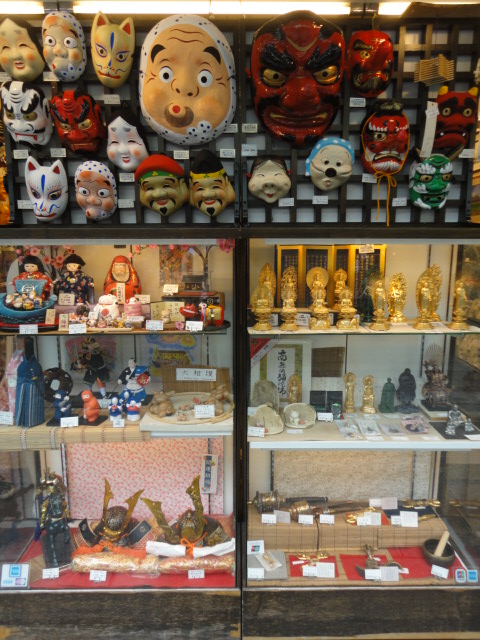

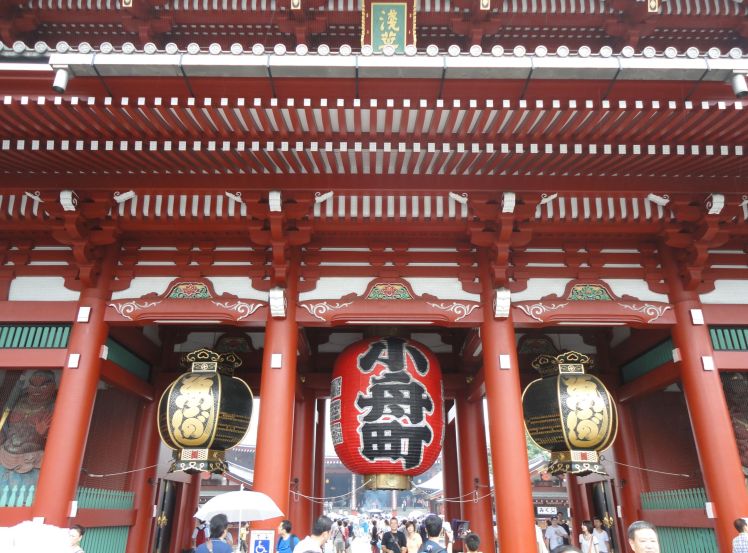
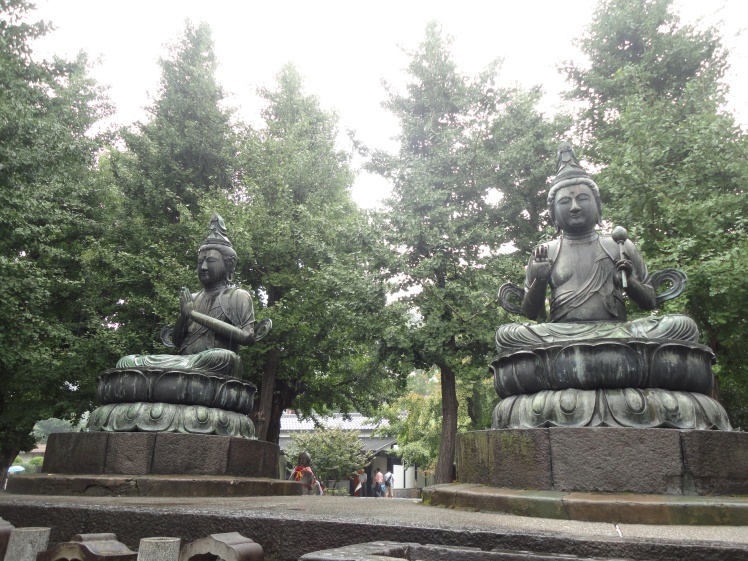
Stylish Buddhas on the temple grounds

A statue of a mother and children in the temple ground. I also saw little statues with bibs in Kyoto. These are called jizo and usually have something to do with children. This statue was erected to comfort the spirits of mothers and children who died during World War II.
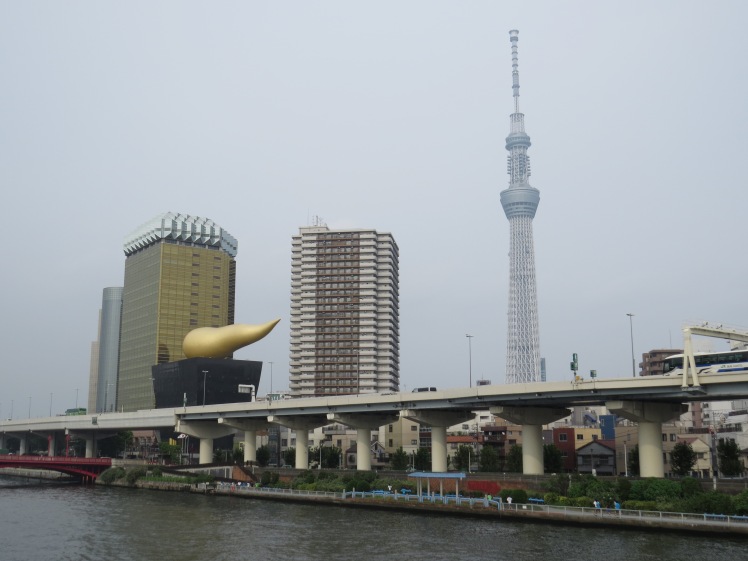
Tokyo Skytree. I don’t know what the hell is that golden “horn” perched on the black box on the left.
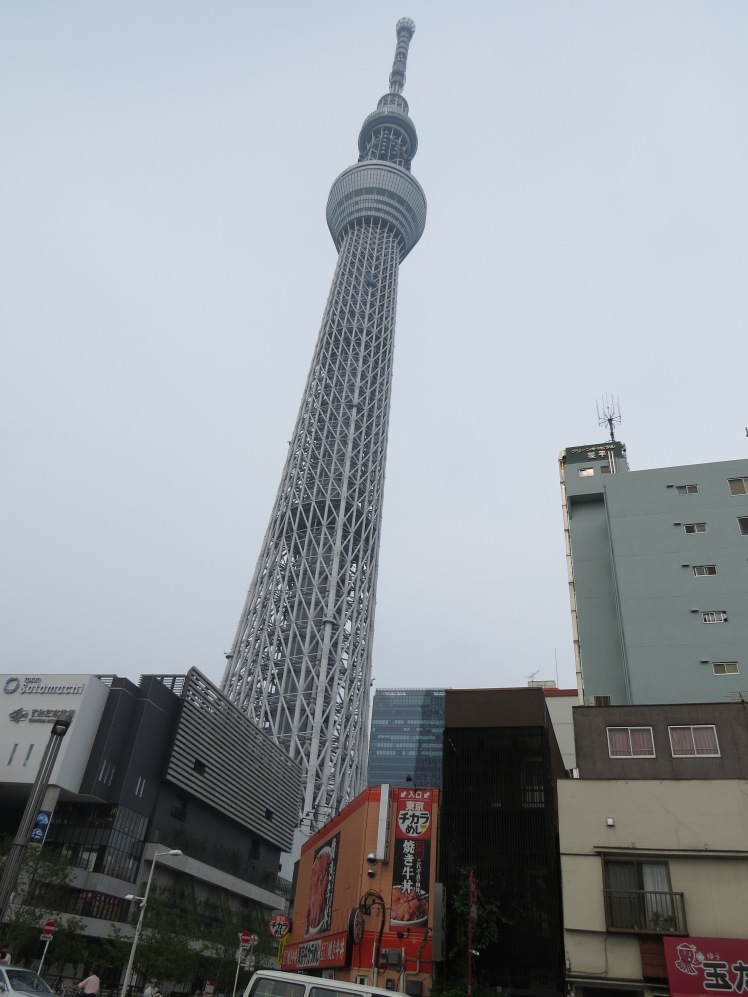
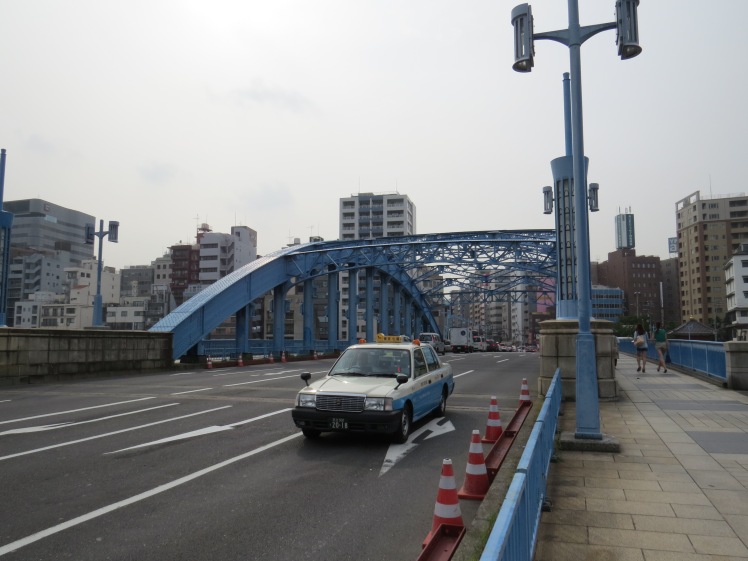
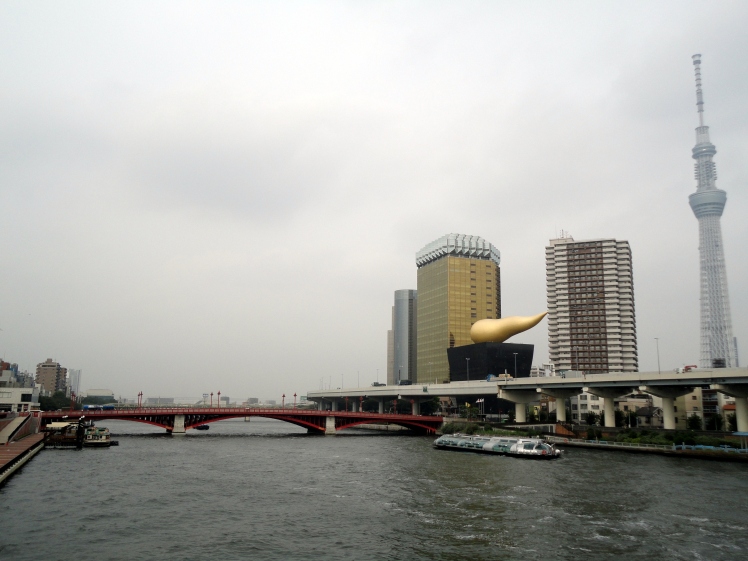

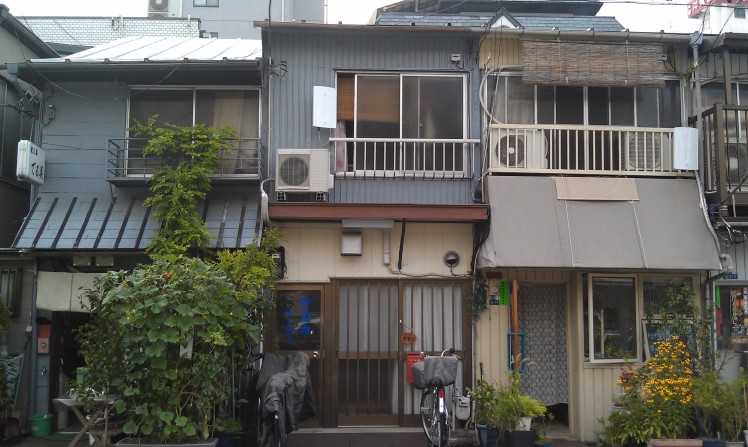
Oldish wooden houses on a side street in Asakusa
Agree, I like Osaka and Kyoto very much in comparison to Tokyo ~ but the wild divergence between districts and areas of Tokyo is incredible… Tokyo also has the most WTF things in it as well (as the golden horn you point out!!!) 🙂
LikeLike
Yeah, I missed out on districts like Roppongi and didn’t spend enough time downtown. That golden horn was so strange. The kitchen goods street I passed on the way to Sensoji Temple and Skytree was weird too with the huge mock cups and utensils outside the stores, but I didn’t take pictures.
LikeLike
I think Asakusa nowadays has a night-side to it too. All the illuminated temple structures, views of the Skytree, and of course that multi-floor Don Quixote.
LikeLike
That sounds cool; the Skytree must be really attractive lit up at night. I didn’t know about the Don Quixote then.
LikeLike
An entire street of shops filled with kitchen gadgets… My wildest dreams come true!
LikeLike
Haha, I merely passed by it but I could see it’s full of those stores. They mainly sell “low-tech” stuff like pots, utensils, stoves, plus plastic food dishes you always see in the windows of Asian restaurants.
It is kind of an attraction in itself.
http://www.japan-guide.com/e/e3020.html
LikeLike